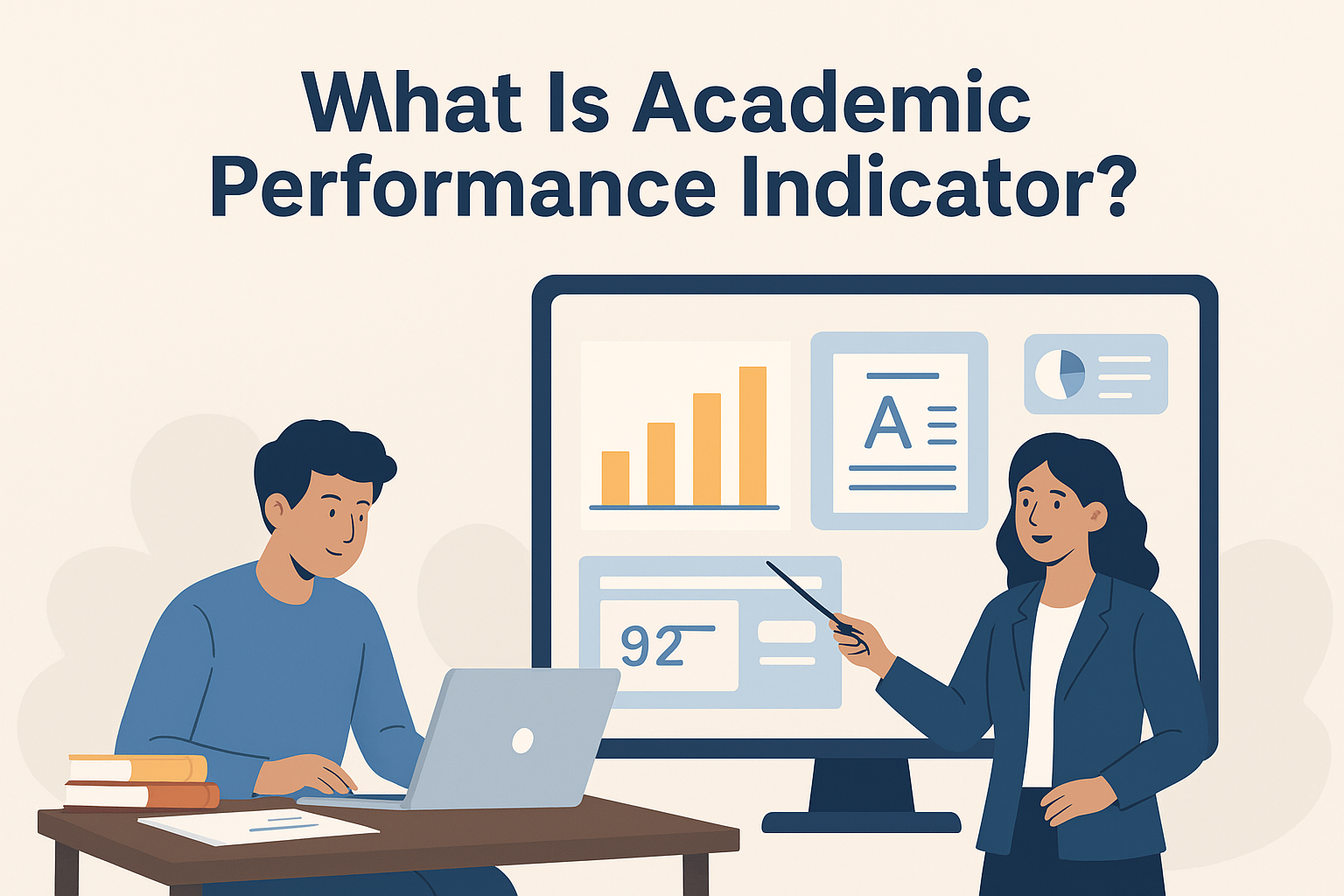Academic success isn’t just about grades anymore. In today’s education system, institutions and governing bodies use a structured framework to evaluate teachers, researchers, and sometimes even students — and one of the most widely recognized methods is the Academic Performance Indicator (API).
But what exactly is it? Why does it matter? And how is it measured? Let’s break it down.
What Is an Academic Performance Indicator (API)?
An Academic Performance Indicator (API) is a scoring system used by universities, colleges, and accreditation bodies to evaluate the performance of faculty members and researchers. It helps measure contributions in three main areas:
- Teaching and Learning – assessing classroom engagement, student outcomes, innovative teaching methods, and curriculum development.
- Research and Publications – evaluating research papers, conference presentations, books, patents, and citations.
- Professional Development & Contributions – looking at activities like organizing seminars, serving on committees, mentoring, and participating in academic outreach.
The API acts as a standardized way to compare academic achievements across institutions.
Why Was the API System Introduced?
Before standardized indicators, academic evaluations were inconsistent. Some teachers were judged mainly by seniority, others by student results, and some by research alone.
The University Grants Commission (UGC) in India formally introduced the API system to create fairness and transparency in promotions, research grants, and recruitment processes. Many other global institutions now use similar frameworks, though they may have different names.
The idea is simple: recognize and reward balanced contributions — not just one-dimensional academic output.
Components of Academic Performance Indicator
The API score is typically broken down into three categories:
1. Teaching, Learning, and Student-Related Activities
- Number of teaching hours per week
- Student mentoring and counseling
- Use of innovative teaching tools (digital classrooms, e-learning, AI-powered platforms)
- Curriculum design and updates
2. Research, Publications, and Academic Contributions
- Published research papers in recognized journals
- Books and chapters written
- Patents or technology transfers
- Papers presented at international/national conferences
3. Extension, Co-Curricular, and Professional Development Activities
- Participation in academic committees or boards
- Community service and outreach programs
- Organizing workshops, symposiums, or cultural events
- Professional development courses completed
How Is API Scored?
Each category carries a point system. For example:
- Publishing a research paper in a peer-reviewed journal may give 10 points.
- Delivering a keynote speech at an international seminar could add 5–7 points.
- Designing a new course curriculum may add another set of points.
The total API score determines eligibility for promotions, research funding, or academic recognition.
Benefits of the API System
- Transparency in promotions – Faculty promotions are based on measurable performance, not favoritism.
- Encourages holistic development – Teachers must balance teaching, research, and community service.
- Promotes quality research – Incentivizes publishing in reputed journals.
- Improves student outcomes – Teaching innovations and mentoring directly benefit learners.
Criticisms and Limitations
While widely used, the API system is not perfect. Some common criticisms include:
- Quantity over quality – Faculty may focus on publishing more papers instead of meaningful research.
- Paperwork-heavy – Tracking and reporting activities can be burdensome.
- Not always globally aligned – Standards differ across countries and institutions.
Still, many universities continue to refine API metrics to make them more balanced and reflective of real academic impact.
Academic Performance Indicator vs. Student Performance Metrics
It’s important to note that API usually refers to faculty evaluation, not student grades. However, the principles can inspire student academic performance indicators, such as:
- Attendance and participation
- Assignment quality
- Skill-based achievements
- Research contributions at the undergraduate level
Related Reads
If you’re curious about measuring success beyond just academics, check out our guide on Direct Democracy Countries: What They Are and How They Work. While political in focus, it highlights how structured systems bring fairness and balance — much like APIs in education.
Final Thoughts
So, what is an academic performance indicator?
It’s a structured scoring system designed to evaluate the multi-dimensional contributions of educators and researchers, ensuring that both teaching and research excellence are recognized.
In a rapidly evolving education landscape, APIs provide transparency, fairness, and a way to balance expectations. For students, understanding this system can also inspire better self-evaluation, ensuring growth in academics, skills, and community impact.












